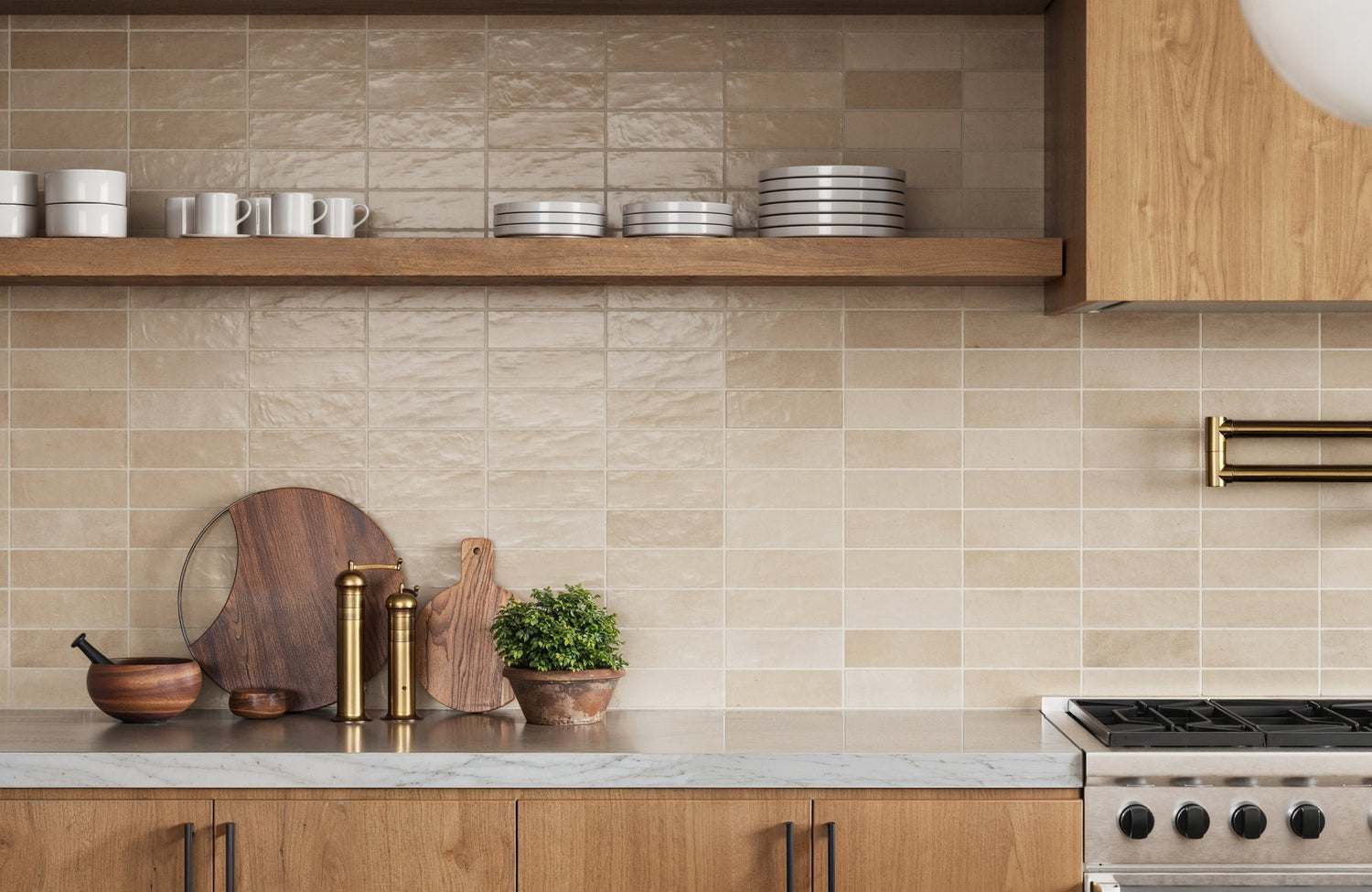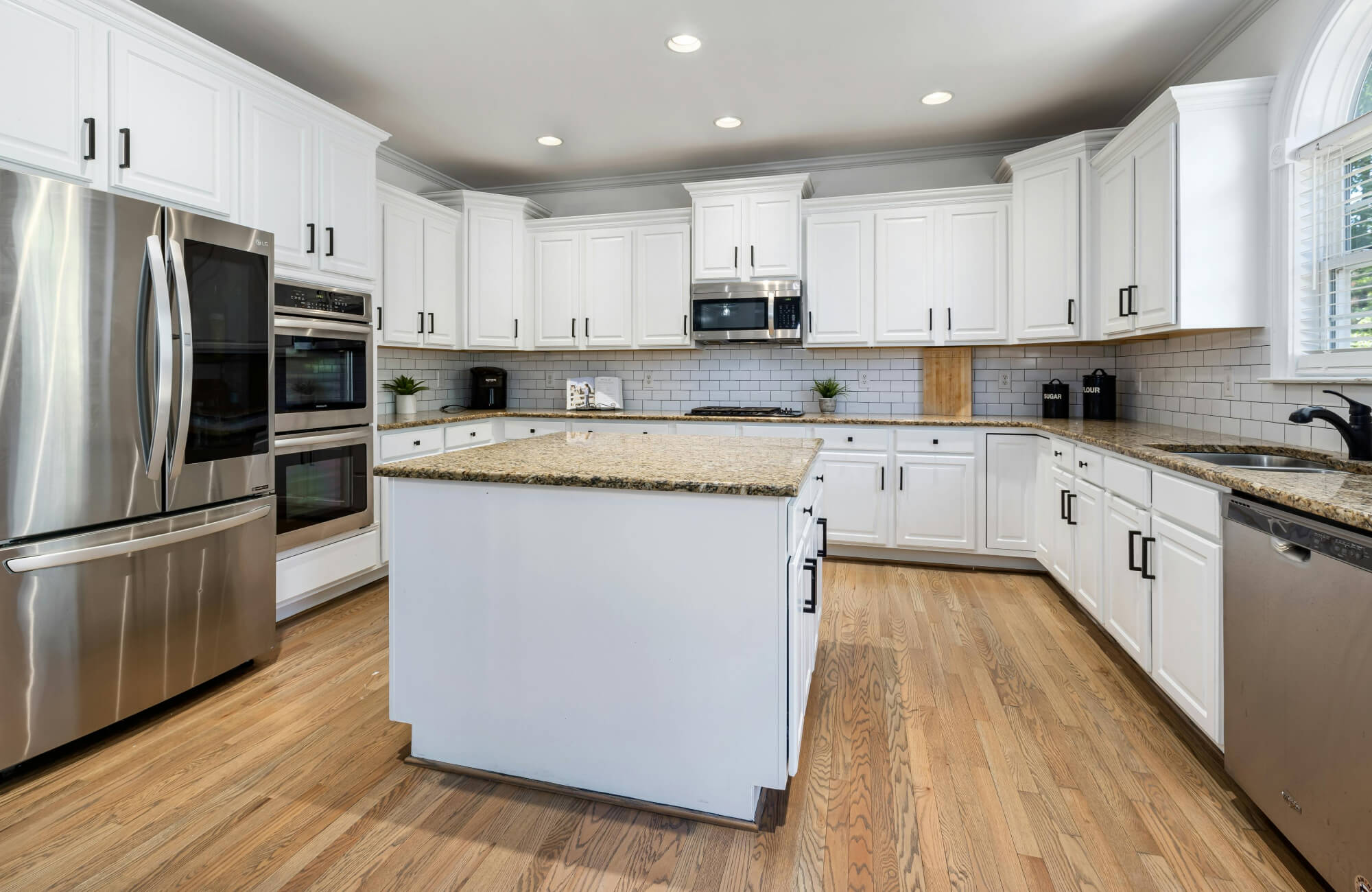Rectified and non-rectified subway tiles are timeless options, each with distinct characteristics that cater to different design preferences. In this article, we’ll look into all their key differences, exploring how these distinctions influence the aesthetic and functionality of your space. Plus, we’ll provide practical tips to help you choose the subway tile option that best suits your style and needs.

Rectified Subway Tiles
Rectified subway tiles, such as the Chantel 3x12 Matte Porcelain Tile in Imperial shown in the image above, are known for their unparalleled precision. During the rectification process, each tile is precisely cut and the edges meticulously finished, ensuring uniformity across all tiles. This meticulous craftsmanship leads to a clean, seamless appearance with minimal grout lines, which is fundamental for achieving the refined aesthetics desired in contemporary settings, such as high-end kitchens and luxury bathrooms. Their consistent size and shape also facilitate intricate layout designs, further enhancing the modern feel of any room.
However, this level of manufacturing precision carries a higher initial cost and typically necessitates professional installation to achieve perfect alignment. Potential users should thoughtfully evaluate the balance between cost and aesthetic appeal, considering whether the investment aligns with the sleek visual benefits and functional advantages that rectified subway tiles provide.

Non-Rectified Subway Tiles
Non-rectified subway tiles, such as the Maisie 2.5x16 Glossy Ceramic Tile in Canvas shown in the image above, are crafted using traditional methods, which result in natural variations along their edges. Unlike rectified options, they are not precisely cut after firing, allowing each piece to retain its unique shape. This process gives them their distinctive character, contributing to a textured finish that feels more natural and less uniform. Their slightly irregular edges are especially well-suited for sheltered outdoor areas, such as covered porches or garden paths, where their organic texture blends beautifully with natural surroundings.
In addition, these tiles are a budget-friendly option, making them practical for larger or multi-room projects. Their easier installation process also makes them a great choice for DIY enthusiasts or designs that don’t require precise detailing. However, the larger grout lines can sometimes result in less precise alignment, potentially complicating cleaning and maintenance. Therefore, it’s important to weigh their aesthetic charm against these practical considerations to ensure they suit your specific needs.

Design Considerations and Tile Placement Tips
Choosing between rectified and non-rectified subway tiles involves understanding how each affects the overall design and functionality of your space. Below, we'll explore key considerations such as tile size, shape, and layout to help you determine which type best complements your environment.
Popular Subway Tile Layouts
When deciding between rectified and non-rectified subway tiles, consider how each type enhances different layout options. Both tile types are compatible with traditional horizontal and vertical orientations that effectively alter the spatial perception of any room. However, rectified subway tiles are particularly suited for intricate patterns such as herringbone shown in the image above or chevron, thanks to their precise edges that allow for tighter grout lines and a cleaner overall appearance.
Trending Size Choices
The size of your subway tiles can significantly impact how they enhance a room's proportions and functionality. Smaller options, ranging from 2x6 to 3x10 inches, are perfect for compact spaces or accent walls, offering a balanced and timeless appearance without overwhelming the area.
On the other hand, longer subway tiles, starting from 3x12 inches and extending to sizes like 4x12 or even 6x24 inches, provide versatility for a wide range of applications. As shown above, with the Aniston 3x12 Polished Porcelain Tile in Calacatta Top, these larger options are perfect for open-plan kitchens and even floors, offering fewer grout lines and a seamless, modern aesthetic for spacious areas.
If you want to see how the right subway tile can transform your space, try our augmented reality (AR) tool. It's a great way to test out different options and see how each tile layout affects your interior design before making a final decision.
Conclusion
Whether you opt for rectified or non-rectified subway tiles, each type offers distinct advantages that can enhance different design visions. Rectified subway tiles, with their sleek and uniform appearance, are perfect for modern designs that require clean lines and minimal grout visibility. On the other hand, non-rectified subway tiles can add a warm, organic touch to any space, making them ideal for settings that aim for a rustic or traditional feel due to their naturally varied edges.
If you're considering rectified or non-rectified subway tiles and need expert advice on selecting the perfect style or design for your space, feel free to contact us! Our team is here to help you craft a design that seamlessly blends elegance with functionality, tailored to your unique space and vision.







